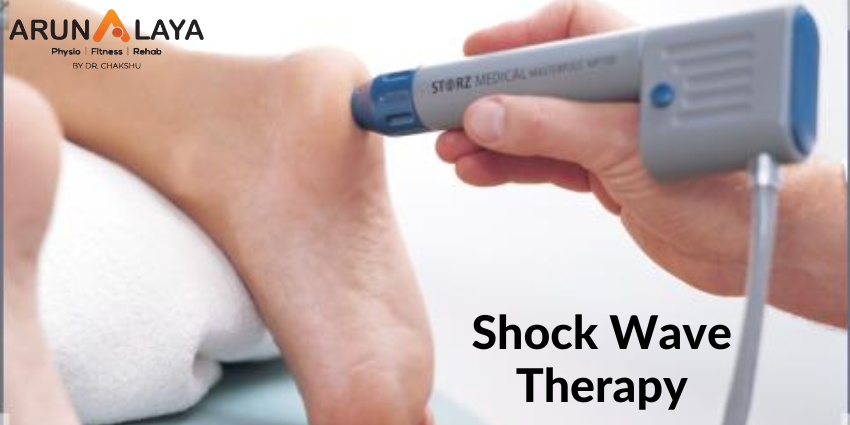Shock Wave Therapy: How it Works?
Shock Wave therapy is a technique that uses high-energy sound waves rather than electrical shocks to aid in the healing process following an injury.

SWT is a cutting-edge treatment that uses acoustic shock waves to break up soft tissue calcifications, boost collagen production, release growth factors, and accelerate your body’s healing process in order to reduce pain and keep you active.
It’s a lesser-known physiotherapy technique, yet it can be beneficial.
Injuries that can be treated
Shock wave therapy is used to treat musculoskeletal injuries, particularly those areas involving connective tissue and bone.
The following are some examples of common injuries treated with shockwave therapy:
- tennis/golf elbow
- rotator cuff tendonitis
- calcification
- stress fractures
- trochanteric bursitis in the hip
- patellar tendonitis
- jumper’s knee
- hell spurs
- Achilles tendonitis
- Morton’s neuroma in the foot
Shock wave therapy treatment has been shown to be an excellent approach to start the body’s healing process and reduce discomfort while regaining movement.
Most people require only three treatments per week.
This therapy improves blood circulation and hastens the repair of chronic musculoskeletal disorders in the bones, tendons, ligaments, and muscle.
How does it work?
- Shockwave treatment stimulates self-healing by using radial acoustic shockwaves.
- These shockwaves, which are not electrical but rather sound shockwaves, are administered through a special wand hand piece that dispenses the waves for a brief amount of time directly to the affected injured tissue areas.
- The pressure from the shockwaves will be transferred to the tissue. As a result, special micro-cavitation bubbles form, expand, burst, and produce a force known as a resultant force.
- This passes through the tissue and stimulates the cells responsible for connective tissue and bone mending, so activating the body’s inherent self-healing mechanism.
- These processes involve increased metabolism and blood circulation. It means that your damaged tissue receives better healing treatment from your body, and the damaged tissue will begin to regenerate itself, with an accompanying inflammatory response allowing the healing process to take effect.
- Some people find it slightly uncomfortable to go through. However, these people are frequently in the minority, and the majority are able to handle the five-minute treatments with ease.
- Though there will be no pain immediately following the treatment, there is a potential of discomfort in the hours that follow.
- This discomfort can last for up to two days, therefore patients should limit their physical activity and avoid using anti-inflammatory drugs or ice.
How does it feel?
ESWT hurts, and the degree of pain varies from person to person. The majority of patients perceive it as slightly uncomfortable but not painful.
It also affects where we treat you. Body portions with less skin and muscle, such as above the hip bone, can be more sensitive than meatier areas, such as the calves.

